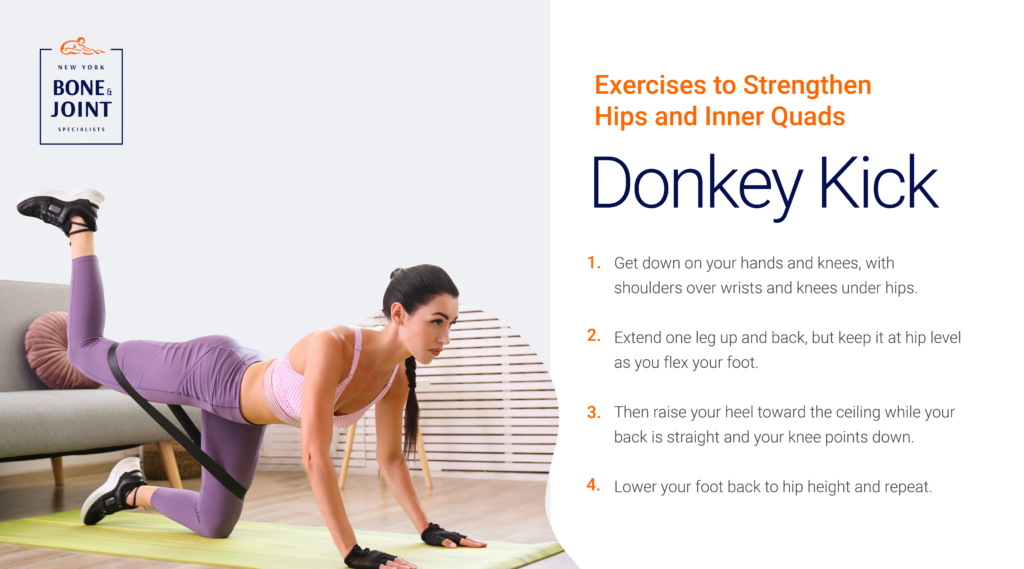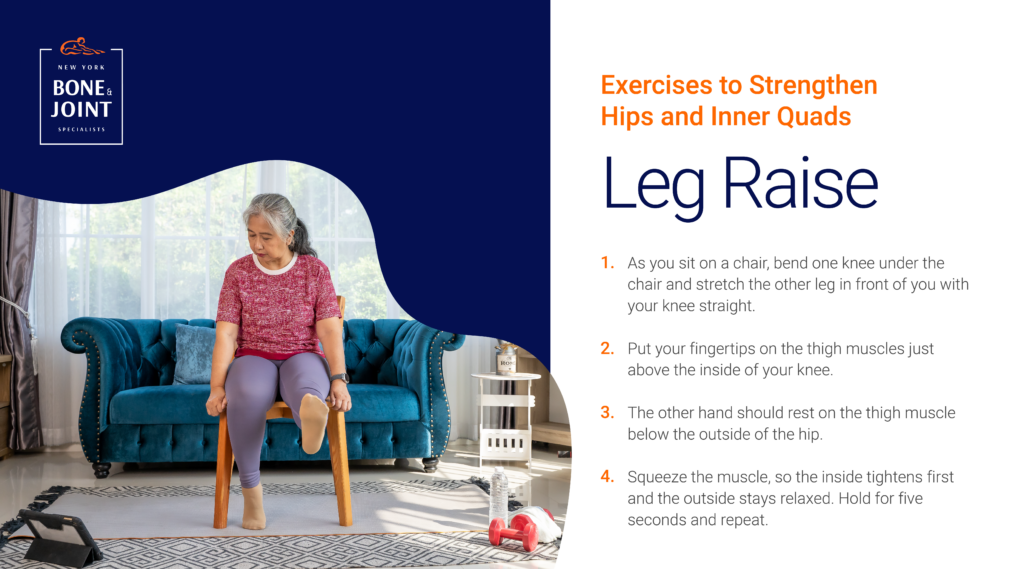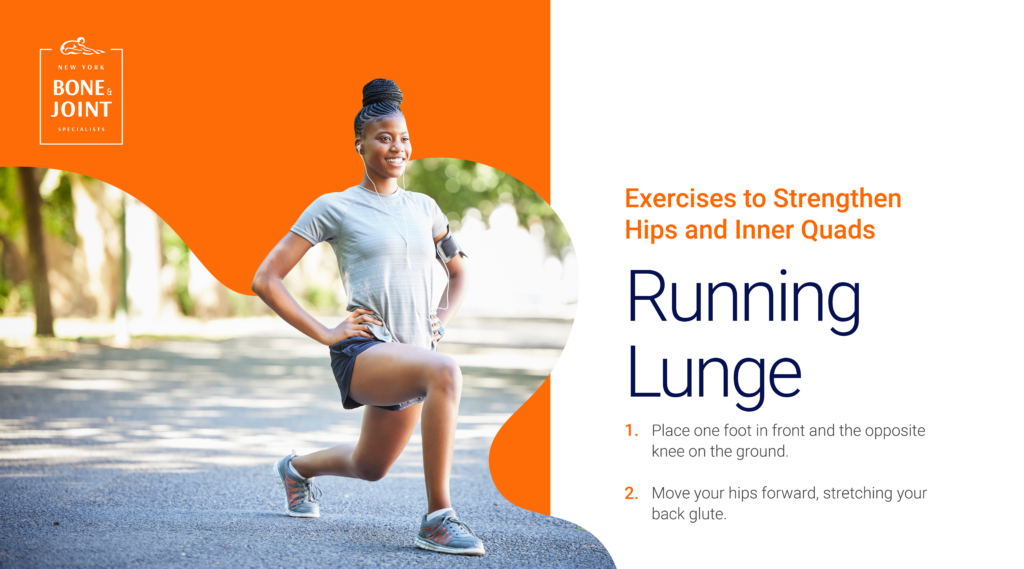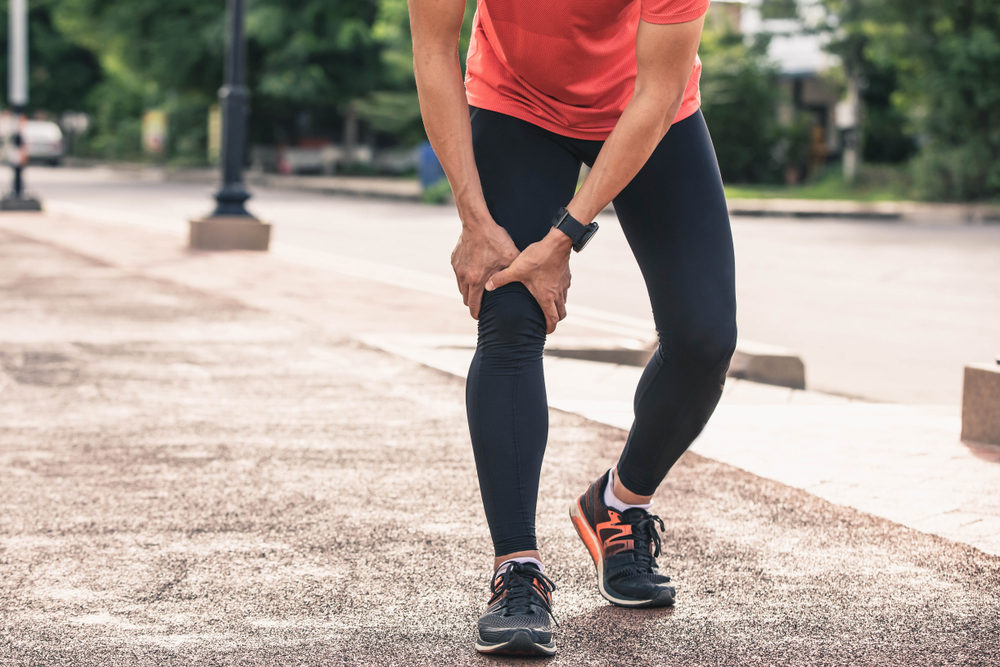With physical therapy exercises designed to stretch and strengthen surrounding muscles, patients can get relief from painful runner’s knee.
Knee pain is one of the most common orthopedic complaints. Runners in particular are prone to knee disorders, such as patellofemoral syndrome or chondromalacia patella, commonly known as runner’s knee.
When runners stride, they naturally bend their knees. If the muscles surrounding the patella (kneecap) are weak or too tight, the kneecap falls out of alignment with the femur, or thigh bone. The resulting friction causes pain and swelling in the front of the knee. Patients may also notice a clicking sound when flexing the knee or a sharp pain as they walk up and down stairs.
The good news is, runner’s knee isn’t caused by abnormalities within the ligaments and cartilage in the joint and rarely requires surgery. Conservative therapies to manage pain and improve muscle strength will get you back on the running track in six to eight weeks.
Treatment for Runner’s Knee
If you’re suffering from runner’s knee, the first step to ease discomfort is to try a mix of rest, anti-inflammatory medication, and icing. To stabilize the knee, you can wear a brace or tape the joint. At the same time, physical therapy targets the hip muscles and hamstrings to encourage flexibility.
Here are some exercises you can do at home to strengthen the hips and inner quads:
- Clamshell. Lie on one side, balanced on your forearm, with your shoulder over your elbow and hips aligned. Rotate the top hip as you raise the top knee toward the ceiling, making sure to keep your feet together. Return to starting position and repeat.
- Donkey Kick. Get down on your hands and knees, with shoulders over wrists and knees under hips. Extend one leg up and back, but keep it at hip level as you flex your foot. Then raise your heel toward the ceiling while your back is straight and your knee points down. Lower your foot back to hip height and repeat.
- Leg Raise. As you sit on a chair, bend one knee under the chair and stretch the other leg in front of you with your knee straight. Put your fingertips on the thigh muscles just above the inside of your knee. The other hand should rest on the thigh muscle below the outside of the hip. Squeeze the muscle, so the inside tightens first and the outside stays relaxed. Hold for five seconds and repeat.
- Foam Roller. Use a foam roller to loosen your hamstrings or quadriceps. Place the foam roller on the outside of the thigh and move it up toward the hip and back to ease tension in the IT band.
- Running Lunge. Place one foot in front and the opposite knee on the ground. Move your hips forward, stretching your back glute.
Surgery is reserved for cases where the kneecap continues to dislodge, or the cartilage lining the bone breaks off. The surgeon realigns the kneecap by attaching it to the ligament, or cuts the bone to prevent further dislocations.



Visit a Knee Specialist
If you’re suffering from knee pain and think it may be due to runner’s knee, the specialists at New York Bone & Joint will diagnose the condition and recommend treatment options. We have a staff of expert physical therapists on hand to help you overcome runner’s knee with conservative methods. Make an appointment today to start your journey to recovery.




